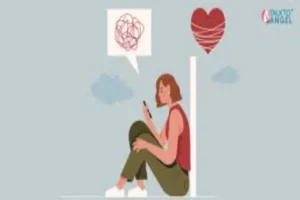Key Elements That Make Indie Horror Films Truly Terrifying for Viewers

Fear doesn’t always need big budgets or flashy effects. Some of the scariest independent movies work their magic through raw emotion, atmosphere, and storytelling that crawls under the skin. These chilling tales often leave a lasting impact, not by showing too much but by making viewers feel too much. This article dives into the specific components that give indie horror films their edge.
Unpredictable Storytelling Keeps Viewers on Edge
Some of the scariest indie movies ditch clichés and formulaic plots, opting for twists that catch audiences off guard. Filmmakers take bold risks, crafting stories that feel fresh and genuinely terrifying. Each turn feels earned, not forced, pulling viewers deeper into the unknown. Unconventional narratives force viewers to stay engaged, never knowing what lurks around the corner. The absence of predictable jump scares or tired tropes makes every moment feel dangerous. Indie horror thrives on the unknown, and that’s what makes it so chilling.
Atmospheric Tension Over Cheap Thrills
Big studios often rely on loud noises and sudden shocks, but indie horror builds fear slowly. The tension stretches like a rubber band, threatening to snap at any moment. The best films use:
- Dark corners and dim lighting let imaginations run wild.
- Abandoned houses, dense forests, or empty streets amplify vulnerability.
- Unsettling whispers, distant footsteps, or even silence ratchet up dread.
The atmosphere lingers long after the credits roll, making simple scenes feel horrifying. It’s not about what’s shown; it’s about what’s hinted at, leaving minds to fill in the worst possibilities. That unseen fear follows viewers into the quiet of their own homes.
Raw, Relatable Characters Heighten Fear
Unlike blockbuster horror, indie films often focus on ordinary people in terrifying situations. These characters feel really flawed, desperate, and utterly unprepared for what’s coming. Their vulnerability creates a deeper emotional hook than any special effect ever could. When protagonists act like real humans instead of action heroes, their fear becomes contagious. Viewers think, “That could be me,” and suddenly, the horror hits closer to home. Authentic performances make the nightmare feel all too possible.
Minimalism That Feels Too Real
Working with limited budgets can push indie creators to focus more on emotion and atmosphere than on effects. Ironically, this restraint often makes everything feel too real. Below are some techniques that strip horror down to its most powerful core:
- Dim lighting and gritty settings create a lived-in world that feels believable.
- Practical effects and handheld shots make viewers feel like they’re right there.
- Sparse dialogue or long silences heighten unease and let tension speak for itself.
These stripped-down visuals bring out a raw kind of fear that lingers long after the credits roll. They don’t shout for attention; they whisper nightmares. It’s that quiet, creeping dread that stays tucked away in the back of the mind.
How Indie Filmmaking Adds to the Experience
Independent film studios often experiment in ways mainstream productions don’t. There’s more room to take creative risks that change how stories are told. This freedom allows fresh voices, diverse perspectives, and unique styles to emerge rather than relying heavily on the clichéd technique of jump scares. These creative decisions often turn small-budget movies into unforgettable nightmares. The impact of indie horror comes not just from the plot but from the energy and authenticity behind it. Every scene feels personal like it was made to unsettle you specifically.
The scariest indie movies succeed because they tap into something deeper than jump scares or flashy effects. These films leave a chill because they build fear through reality, sound, surprise, and simplicity. Viewers aren’t just watching; they’re feeling everything. That’s what makes indie horror so powerful. It doesn’t need permission to disturb, and it doesn’t care if anyone’s ready for it. The most terrifying stories are often the ones told with the fewest tools and the boldest heart.




